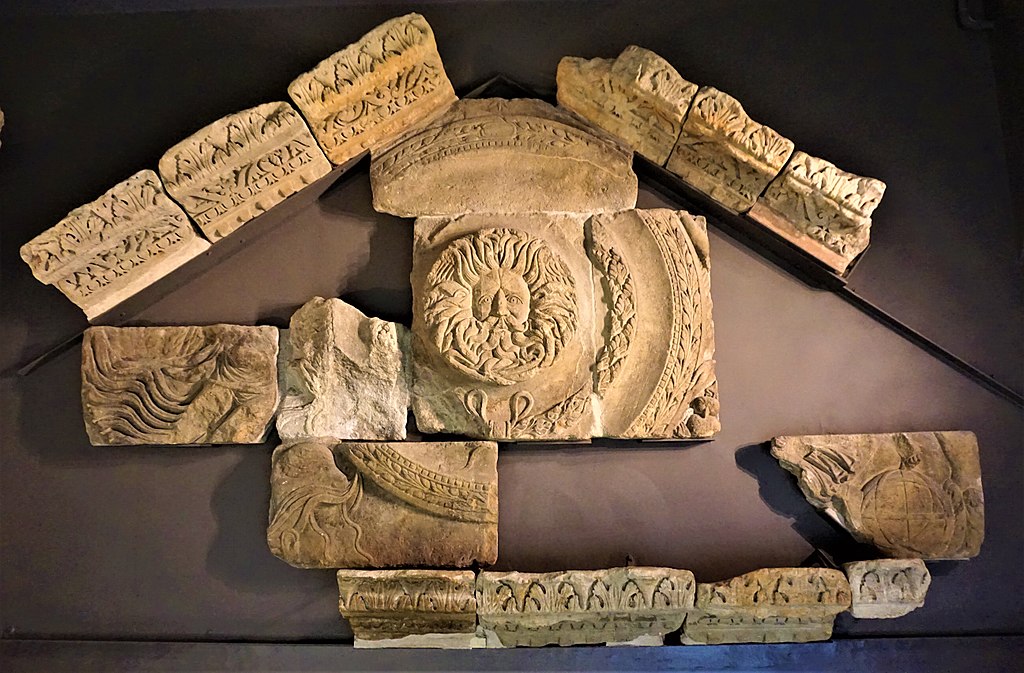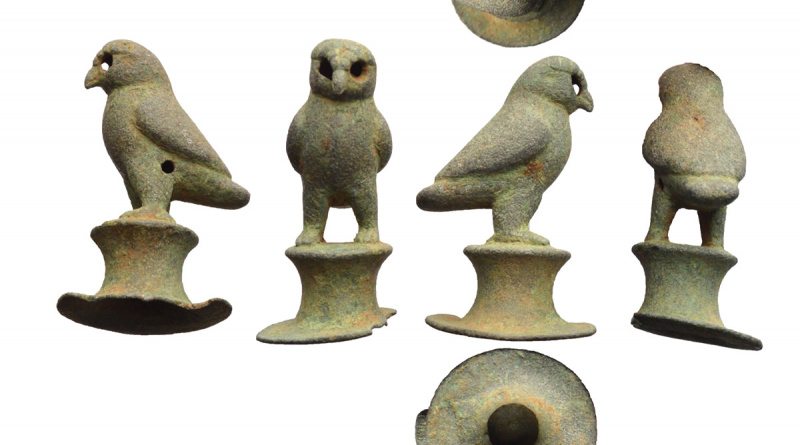Roman owl figurine
A Roman copper-alloy figurine of an owl standing on a pedestal with a hollow base. This would allow it to be mounted, perhaps on a ceremonial sceptre or mace. It has been designated a Find of Note.
In Roman culture, the owl was considered to be a harbinger of death and, through a connection with the goddess Minerva, a symbol of wisdom.
Owl as a harbinger of death
The deaths of Augustus, Commodus Aurelius, Agrippa and Julius Caesar were all thought to have been presaged by the hoot of an owl. In Shakespeare’s Julius Caesar Act 1, Scene 3 “Yesterday the bird of night did sit, even at noon-day, upon the market place, hooting and shrieking“.
Minerva’s special bird
Minerva (from the Latin meminisse – to remember) was the Roman version of the Greek goddess Athena. She was the goddess of war, wisdom and healing. The owl is closely associated with Minerva as it symbolises wisdom and learning.
Temple for Minerva at Bath
The Romans built a temple for Minerva at the Roman Baths in Bath. They believed that she could be found in the hot springs. The Roman name for Bath “Aquae Sulis” translates as “The waters of Sulis”. Sulis was a local Iron Age goddess who the Romans linked with Minerva – Sulis Minerva.

Photo: Joyofmuseums, CC BY-SA 4.0
This is the remains of the Temple Pediment that was above the entrance to the Temple of Sulis Minerva. At the bottom right of the larger central rectangular piece is the carving of an owl.
The find spot of this owl figurine is given as Cotswold and so there is a possible link with the worship of Sulis Minerva.

